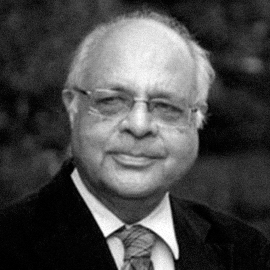Provident Funds & stock markets: why change should not be at snail's pace

The history
- PF Act was promulgated soon after independence to safeguard employees
- Every worker, employer was to keep some money aside
- Govt decided to lend PF money to itself
The result
- Govt debt kept the PF corpus secure, but returned low interests
- Returns would often even lag rate of inflation
The solution
- Govt has now decided to invest 5% PF money in stocks
- To be seen: how much difference would such a small amount make
- Workers can be given more say in chosing how their PF is invested
Bandaru Dattatreya, the minister of state for labour, has announced that henceforth the Employees' Provident Fund Organisation will be allowed to invest up to 5 per cent in shares of private companies. Why was it not till now? And what difference will 5 per cent make?
The EPF Act was promulgated soon after Independence. The new government of independent India felt that workers should set something aside for their old age. It was not to be their responsibility alone; their employers would have to contribute as well. The workers would not get the money till they were old and retired. And neither they nor their employers could be trusted to invest wisely.
So the government took away the money and invested it in supremely safe assets - namely, its own debt. That it would not have to repay for decades was an added advantage. After all, it was India's first popular, elected government; who could be more trustworthy than itself?
But those were days when the only computers in the world were a handful of massive structures confined to industrial countries; the provident fund had to be managed through thousands of files. The paperwork involved daunted the government.
The mechanisms
So it confined the provisions to firms employing more than 20 workers and paying them more than a certain wage. That wage has been raised from time to time, and is now Rs 6,500 a month. The worker contributes 12% of his wage, and his employer contributes the same amount.
It goes to the worker in his old age. Till then, it sits in the account of the EPFO with the Reserve Bank. The government could hardly leave the money there for 20 or 30 years; it would be eaten up by inflation meanwhile. So it lent itself the money and paid interest on it.
The EPFO could keep 5% of it at most in cash. Of the rest, it could invest 55% or less in long-term securities of the government, and 55% or less in its short-term securities and in term deposits of government banks. The interest was often exceeded by inflation, and the real value of the accumulated savings went down; but that was just the workers' luck.
Should the government put money in riskier equity for such small additional returns?
Meanwhile, rich people could invest their savings in the stock market and get much higher returns. Upendra Kumar Sinha, the current chairman of Securities and Exchange Board of India, has long urged the government that the EPFO should also invest in shares. His ceaseless campaign has led to this tiny little step of Dattatreya.
What difference will it make? Suppose the normal investments in government securities and banks' term deposits paid 10%, and that the fund found good equity portfolio managers who earned 20%. Then the average rate of return would rise from 10 to 10€š€.5%, and money invested for 30 years would grow 20 times instead of 17.
But most workers' investment would have a much shorter average maturity period of 10-15 years. In 15 years, the money would grow 4.17 times at 10% and 4.47 times at 10.5%. The difference is much less: instead of 15% more, the higher interest would lead to a 7% higher terminal amount.
That raises two questions. First, should the government put money in riskier equity for such small additional returns? One might say no, but the difference is small because the shift to equity is tiny.
If all the money were invested in equity yielding 20% instead of debt yielding 10%, the savings would grow 15-fold instead of 4-fold. Instead of 5%, the government should put 95% of the money in equity.
The perils
The risk would be correspondingly greater. With the present investment pattern, the money keeps growing at 9-10% every year; if invested in equity, its value could fall 30% or more in a crisis. Crises are unpredictable; but historical experience is that they do not last long. So for long-term investment, they need not worry one too much.
But the more of the money is invested in equity, the less will be invested in government debt; the government will have so much less to spend. Is that a bad thing? One can imagine a government like, say, that of China, which invested intelligently in infrastructure and raised economic growth by a few per cent a year; depriving it of investment would be a bad thing.
But if it is a ham-handed government like in India, giving it even a penny would be a sin. Why not give employees a choice of investing in a number of balanced funds, and let them decide whom they want to trust?
The views expressed here are personal and do not reflect those of the organisation.
First published: 10 August 2015, 6:00 IST






![BJP's Kapil Mishra recreates Shankar Mahadevan’s ‘Breathless’ song to highlight Delhi pollution [WATCH] BJP's Kapil Mishra recreates Shankar Mahadevan’s ‘Breathless’ song to highlight Delhi pollution [WATCH]](https://images.catchnews.com/upload/2022/11/03/kapil-mishra_240884_300x172.png)

![Anupam Kher shares pictures of his toned body on 67th birthday [MUST SEE] Anupam Kher shares pictures of his toned body on 67th birthday [MUST SEE]](https://images.catchnews.com/upload/2022/03/07/Anupam_kher_231145_300x172.jpg)






